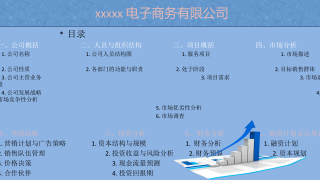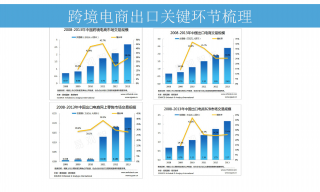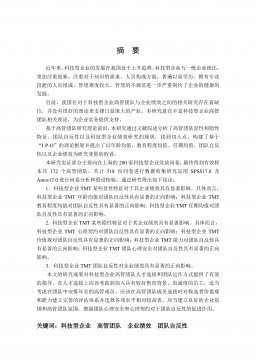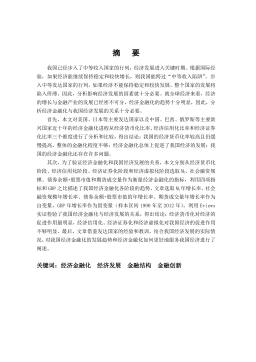杂换热网络MINLP问题非线性分析及全局最优化
VIP免费
摘 要
换热网络在工业生产中作为过程系统的重要部分,对其进行优化以提高其性
能对降低生产能耗和生产成本有着重要的作用。到目前为止,对换热网络的优化
已进行过许多研究,但是由于该问题严重非凸非线性,寻找系统的全局最优结构
仍面临许多困难。
换热网络优化问题是一个 MINLP 问题,求解域中有大量的局部最优解,实现
全局最优化的关键的问题就在于如何有效地跳出某个局部最优解,找到质量更好
的解。本文主要从确定性优化方法和随机性优化方法两个方面分别对换热网络的
全局优化问题进行探讨。随机性方法受目标函数限制较少,在求解大型换热网络
时具有较好的可操作性和效率,而确定性方法在对换热网络进行优化时,虽然算
法较复杂,稳定性较低,但具有更高的计算精度。
首先,求解局部最优解是跳出局部极值陷阱实现全局最优化的基础,本文通
过基于梯度的优化方法建立了换热网络的局部优化方法,并从局部最优解的数学
定义证明了该方法的可行性。
随后,通过分析初始点对换热网络优化结果的影响,提出采用蒙特卡罗法结
合多起点法分别选取初始结构和初始面积,再结合局部优化方法不断逼近全局最
优解的优化策略。通过随机均匀的抽样,避免了优化过程陷入某个局部极值陷阱,
并通过算例证明了方法的可行性及有效性。
然后,提出用确定性方法中的隧道函数法对换热网络进行优化求解,通过局
部极小化和求解隧道函数两个过程交替进行,使得目标函数能够从一个局部极小
点跳出寻找到另一个更小的局部极小点,最终寻找到全局最优解。针对隧道函数
法较难合适地选取参数和难以建立较好的收敛判断终止准则这两个难点,在隧道
函数法的基础上提出了用动态隧道函数法优化换热网络,并通过实例验证了方法
的有效性。
最后,提出结构性能连续性原理,通过结合正交实验设计与多元线性回归方
法建立了无量纲的结构性能连续性因子,通过选取合适的局部最优解修正的方法,
验证了该因子在特定的范围内可以有效地预测换热网络的优化性能。
总之,本文针对换热网络优化问题中局部最优解的跳出问题,从确定性方法
和随机性方法两方面进行了深入研究,并提出了多种有效的优化方法。
关键词:换热网络 全局优化 随机性方法 确定性方法 结构性能
连续性
ABSTRACT
Heat exchange network is an important part of the process system in industrial
manufacture. It is significant to improve its performance is to reduce energy
consumption and production cost. Many papers about optimizing heat exchange
network have been published, but due to the complexity of obvious nonlinearity of this
problem, it is still quite difficult to find the global optimal structure of the system.
Optimizing heat exchange network is an MINLP problem. It is the key to find an
efficient method to get the globally optimal solution from lots of locally optimal ones.
In this paper a deterministic and a stochastic optimization method are presented to
locate a new local optimal solution region. Stochastic optimization methods for solving
large-scale heat exchange network are not limited by the size of the network, while the
deterministic optimization methods are more accurate and more efficient than stochastic
optimization methods but more complex and less stable.
Firstly, based the superstructure established the heat exchanger network
optimization model. Since global optimization method is based on finding a local
optimal solution, it is necessary to mathematical prove that the solution converged with
local optimization methods is a local optimal solution in the whole solution domain. The
feasibility of the local optimization method which was used in this paper was proved
from the mathematical definition of local optimal solution.
Secondly, by analyzing the influence of the selection of the initial point to the heat
exchanger network optimization results, a new algorithm combined of the Monte Carlo
algorithm and Multi-start algorithm is proposed. Using the new algorithm and local
optimization method the global minimum point was approached gradually. The
algorithm makes it possible to select the initial points in the whole solution domain to
optimize the heat exchanger network. As it is sampled uniformly and randomly, the
optimization won’t trap into a local minimum solution. Reasonable to select the sample
frequency with the algorithm, it is easy to get a local minimum closed to the global
minimum.
Thirdly, for the limitations of the stochastic algorithm, the tunneling algorithm as a
kind of deterministic algorithm is proposed to solve the heat exchanger network
synthesis problems. Alternately by the two processes of local minima and solve the
tunnel function, it is able to make the objective function to get a smaller local minima
than the former one and approach the global minimum point. For the two difficulties of
selecting appropriate parameters and establishing a satisfactory termination criterion of
convergence, a dynamic tunneling algorithm is developed based on the tunneling
algorithm. The effectiveness of it is verified by case.
Finally, by orthogonal experimental design and multiple linear regression, regress
the dimensionless continuity factor to establish the correlation between the heat
exchanger network structure and the performance in a certain solution region.
In summary, to locate a new local optimal solution region from the previous one,
the heat exchanger network synthesis is researched with deterministic algorithm and
stochastic algorithm and several effective optimization algorithms are proposed.
Key words: heat exchanger network, global optimization, stochastic
algorithm, deterministic algorithm, continuity between
structure and performance
目录
中文摘要
ABSTRACT
第一章 绪论 ·················································································································· 1
1.1 课题的研究背景······························································································· 1
1.2 国内外研究现状······························································································· 2
1.3 本文主要研究内容··························································································· 6
第二章 换热网络优化局部最小解的分析证明 ··························································· 7
2.1 换热网络优化数学模型建立··········································································· 7
§2.1.1 换热网络超结构··················································································· 7
§2.1.2 换热网络数学模型··············································································· 8
2.2 换热网络优化问题求解特性··········································································· 9
§2.2.1 换热网络优化问题的全局优化特性 ··················································· 9
§2.2.2 换热网络优化的全局最优解与局部最优解······································ 10
2.3 定初始结构优化换热网络············································································· 10
§2.3.1 换热网络优化问题无约束化 ····························································· 10
§2.3.2 基于梯度优化算法优化换热网络 ····················································· 12
2.4 局部最小解的数学证明················································································· 14
2.5 本章小结 ········································································································ 20
第三章 考虑换热网络优化影响因素的随机性优化方法·········································· 21
3.1 换热网络优化影响因素分析········································································· 21
§3.1.1 初始结构数列对换热网络优化的影响 ············································· 22
§3.1.2 初始面积数列对换热网络优化的影响 ············································· 23
3.2 随机性全局优化方法····················································································· 25
3.3 随机性算法优化换热网络············································································· 27
§3.3.1 蒙特卡罗法确定初始结构数列V······················································· 27
§3.3.2 多起点法确定优化初始面积数列A·················································· 29
3.4 算例与分析 ···································································································· 30
3.5 本章小结 ········································································································ 32
第四章 隧道函数法在换热网络优化中的应用 ························································· 34
4.1 确定性算法求解换热网络全局优化问题 ····················································· 34
4.2 隧道函数法优化换热网络············································································· 35
4.2.1 隧道函数法··························································································· 35
4.2.2 隧道函数法解决换热网络优化问题 ··················································· 37
4.2.3 隧道函数法算例分析··········································································· 38
4.3 动态隧道函数法优化换热网络 ····································································· 39
4.3.1 动态隧道函数法··················································································· 39
4.3.2 动态隧道函数法优化换热网络 ··························································· 41
4.3.3 动态隧道函数法算例分析 ··································································· 42
4.4 本章小结 ········································································································ 43
第五章 整型变量对换热网络性能的影响分析 ························································· 34
5.1 结构性能连续性原理····················································································· 44
5.2 换热网络结构性能连续性因子 ································································· 45 J
5.2.1 结构性能连续性因子的提出 ······························································· 46
5.2.2 回归模型的建立··················································································· 46
5.2.3 对结构性能连续性因子的拟合 ··························································· 48
5.2.4 拟合公式的适用范围··········································································· 50
5.3 本章小结 ········································································································ 53
第六章 结论与展望 ···································································································· 44
6.1 主要研究结论 ································································································ 54
6.2 进一步研究建议····························································································· 55
参考文献 ······················································································································ 56
在读期间公开发表的论文和承担科研项目及取得成果············································ 61
致 谢·························································································································· 62
第一章 绪论
1
第一章 绪 论
1.1 课题的研究背景
能源是人类生活生产与社会发展进步的重要的物质基础,是推动国家经济发
展的强大动力。我国自改革开放以来,经济发展迅速,能源消费量也在日益增大。
我国是一个能源消耗大国,但是人均的能源消费水平依然很低,人均资源占有量
只有世界平均水平的二分之一,其中主要矿产资源人均占有量甚至还要更低。2010
年,我国一次能源的总消费量为 2432.2 百万吨标准油,占全世界一次能源消费量
的20.3%。与之形成鲜明对比的是,我国的人均能源消费量却仅为 1.74 吨标准油,
比世界人均能源消费水平 1.82 吨标准油还要略低,约为美国人均能源消费水平的
四分之一[1]。
虽然能源产量已经快速提高,但是在经济迅速发展的需求下,能源需求量的
缺口依然很大。考虑到工业的发展与环境保护之间的矛盾也日益尖锐,尽管能源
工业取得了长足的进步,但是仍然在能源结构的合理性、技术水平的先进性、管
理体制的完善性和节能提效等方面,与发达国家存在明显差距,造成用能方面巨
大的浪费。我国的能源利用率远低于发达国家水平,GDP 能源强度大,能源浪费
大,但这也同时意味着节能的潜力大。随着全球能源的日益短缺,节约能源变得
重要而迫切。由于我国能源利用率低,人均资源贫乏,节能工程将是一项长期而
重要的工作。
煤炭是我国能源消费的主导,这是由我国的能源生产情况和能源构成情况决
定的,用煤为主的能源消费结构造成浪费能源、污染环境以及能源利用率低的严
重问题,在这种能源背景下,节能减排势在必行[2]。
工业生产用能是能源消耗的一个重要方面,在工业生产各领域中换热器的使
用频繁而普遍。当有多股冷流体与热流体相互之间需要换热时,系统中则需要使
用换热网络。换热网络由相互换热的冷、热流体与换热器以及辅助的加热器、冷
却器、混合器、分流器等组成。换热网络是工业生产过程中的重要组成系统,换
热网络整体换热效率的提高将会大大提高整个生产过程的用热效率。对结构已定
或在运行期间的换热网络合理安排换热器分布以最小费用运行,或在换热网络中
某些流量、温度发生改变时要求换热网络仍能满足换热要求,并实现费用最低,
都需要通过对换热网络进行优化。优化后的换热网络能大大提高整体用能效率,
减少公用工程用量,降低能耗,达到节能的目的。因此,换热器换热效率的提高
在提高整个工业生产过程的用能效率上有着重要的作用。
复杂换热网络 MINLP 问题非线性分析及全局最优化
国内大多数工厂所使用的换热网络在建设时并没有经过系统地优化或是在初
始优化设计时使用的优化方法不够先进,导致整个换热网络能耗过大,大大增加
了生产成本,造成用能浪费。因此,对已有的换热网络进行优化以及在新建换热
网络时对换热网络进行优化设计,在现今的能源环境下是十分必要和紧迫的。
换热网络优化的数学模型决定了其优化过程是一个具有二次型约束的混合整
数非线性规划(MINLP, Mixed-Integer-Nonlinear-Programming)问题[3],以往在工
程设计中大量使用的夹点法技术[4]往往依赖于设计人员的经验。随着计算机技术的
发展,快速运算成为可能,因此用数学规划法解决换热网络的优化问题成为了以
后进一步探索提高换热网络优化效率与精度的必然趋势。
数学规划法可以用于解决具有大量变量和多种反馈的问题,在进行换热网络
优化时可以通过迭代计算定向搜索最优解,在理论上能够找到问题的最优解。但
是换热网络优化问题的目标函数和约束条件非线性和非凸性十分严重,在求解时
很容易陷入局部最优解难以跳出,以至于现有的优化技术无法找到全局最优解。
因此,使用数学规划法优化换热网络时最关键的问题是用什么方法跳出现有的局
部最优解,找到更好的局部最优解。现有的优化算法并不能很好的解决这个问题,
因此提出一种能成功跳出局部最优解的优化算法是目前工作的重点和难点。
1.2 国内外研究现状
总结已有的各种换热网络综合优化方法,可以大概将换热网络优化算法分为
探试法、以夹点技术为代表的热力学目标法和基于优化算法的数学规划法[5~10]。在
最近的几十年里,许多学者对换热网络全局优化问题尤其是复杂网络的优化进行
了大量深入的研究,提出了各种各样行之有效的优化方法,在生产实际中对提高
用能效率有着重大贡献。
1969 年Masso 和Budd 提出了用探试法解决换热网络的优化问题[11],首先把
大问题进行逐级分解,变成比较容易处理的小问题,再依次求解各个小问题。对
于某些求解方向不明确的优化问题,虽然该方法能比较有效地得到可行解,但是
该可行解往往不能保证是最优解。
在用探试法求解问题的过程中,经验基础的好坏决定了问题能否收敛。而且
探试法可能使得到的可行解大量重复,导致得不到最优解。探试法往往只能一个
权因子对应求解某一个具体的换热网络,并不对所有的换热网络求解具有通用性。
因此使用探试法不能解决复杂的换热网络优化问题。
1970 年Lee 等人提出的分支界限法[12],1973 年Pho 和Lapidus[13]以及 1975 年
Rathore 和Powers 提出的树搜索法[14],这些方法都属于直接最优化搜索法。
2
摘要:
展开>>
收起<<
摘要换热网络在工业生产中作为过程系统的重要部分,对其进行优化以提高其性能对降低生产能耗和生产成本有着重要的作用。到目前为止,对换热网络的优化已进行过许多研究,但是由于该问题严重非凸非线性,寻找系统的全局最优结构仍面临许多困难。换热网络优化问题是一个MINLP问题,求解域中有大量的局部最优解,实现全局最优化的关键的问题就在于如何有效地跳出某个局部最优解,找到质量更好的解。本文主要从确定性优化方法和随机性优化方法两个方面分别对换热网络的全局优化问题进行探讨。随机性方法受目标函数限制较少,在求解大型换热网络时具有较好的可操作性和效率,而确定性方法在对换热网络进行优化时,虽然算法较复杂,稳定性较低,但...
相关推荐
-
跨境电商商业计划书模版VIP免费

 2025-01-09 27
2025-01-09 27 -
跨境电商方案范文VIP免费

 2025-01-09 14
2025-01-09 14 -
创业计划书VIP免费

 2025-01-09 18
2025-01-09 18 -
xx生鲜APP计划书VIP免费

 2025-01-09 12
2025-01-09 12 -
跨境电商创业园商业计划书(盈利模式)VIP免费

 2025-01-09 8
2025-01-09 8 -
跨境电商计划书VIP免费

 2025-01-09 13
2025-01-09 13 -
绿色食品电商平台项目计划书VIP免费

 2025-01-09 22
2025-01-09 22 -
农产品电子商务商业计划书VIP免费

 2025-01-09 9
2025-01-09 9 -
农村电商平台商业计划书VIP免费

 2025-01-09 13
2025-01-09 13 -
生鲜商城平台商业计划书VIP免费

 2025-01-09 21
2025-01-09 21
作者:赵德峰
分类:高等教育资料
价格:15积分
属性:65 页
大小:1.3MB
格式:PDF
时间:2024-11-11






